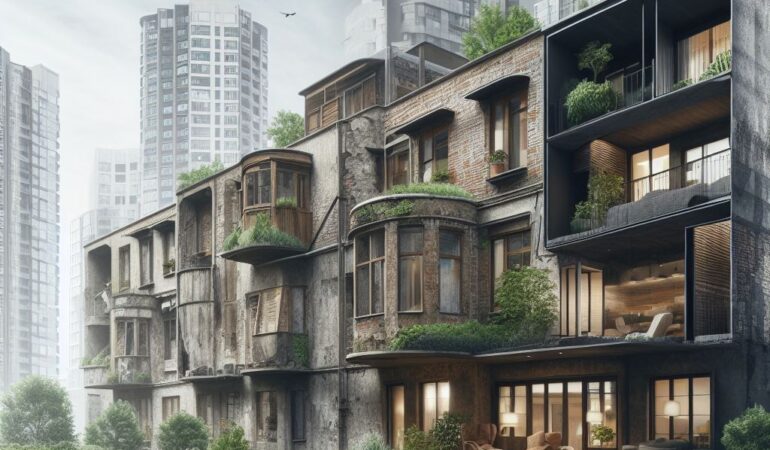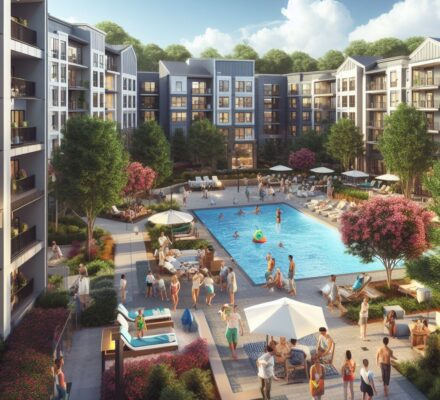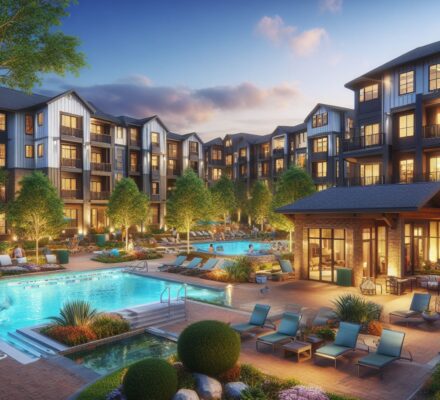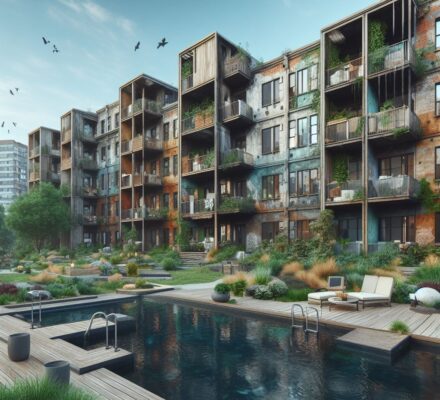Are you ready to unlock the secrets of successful multifamily renovations?
Get ready to roll up your sleeves and dive into the world of value-add strategies.
In this article, we’ll show you how to navigate the market demand, assess property potential, and plan for renovations that will maximize your returns.
With our research-driven insights, you’ll gain the knowledge and confidence to tackle multifamily renovations like a pro.
Don’t miss out on this opportunity to master the art of value-add renovations!
Key Takeaways
- Comprehensive analysis of the local rental market is necessary to understand demand and assess the property’s potential.
- Renovations should be planned and budgeted carefully, considering market trends, demand, and competition.
- Implementing value-add strategies involves investing in high-quality materials, upgrading amenities, and incorporating energy-efficient solutions.
- Maximizing returns and long-term success requires tailoring renovations to attract the right tenants, focusing on profitability, and adapting to the evolving rental market.
Understanding the Market Demand
To successfully master multifamily renovations, you need to start by understanding the market demand through thorough research and analysis. This step is crucial in ensuring that your renovation efforts align with the needs and preferences of potential tenants. By understanding the market demand, you can make informed decisions about the specific renovations and upgrades that will add value to your property.
To begin, conduct a comprehensive analysis of the local rental market. Look at factors such as vacancy rates, rental rates, and demographic trends. This information will give you insights into the demand for multifamily housing in your area and help you identify any gaps or opportunities.
Next, research the preferences and expectations of your target demographic. Are they looking for modern finishes, energy-efficient features, or amenities such as a fitness center or outdoor space? Understanding what potential tenants are seeking will guide your renovation strategy and allow you to prioritize improvements that will attract and retain renters.
Additionally, consider the competitive landscape. Study similar properties in your area and analyze their renovation strategies and amenities. This will help you identify any gaps in the market and differentiate your property from the competition.
Assessing the Property’s Potential
You should assess the potential of your property by evaluating its current condition, identifying any areas for improvement, and determining the feasibility of implementing value-add renovations.
Assessing the property’s potential is crucial before embarking on any renovation project. Start by conducting a thorough inspection of the property, examining both the interior and exterior. Look for signs of wear and tear, outdated features, and any structural issues that need to be addressed. This evaluation will help you understand the scope of work required and the potential value you can add to the property.
In addition to evaluating the property’s condition, it’s essential to identify areas for improvement. Consider factors such as the layout and design, amenities, and overall appeal to potential tenants. Are there opportunities to create more functional spaces, upgrade appliances, or enhance curb appeal? By identifying these areas, you can prioritize the renovations that will have the greatest impact on attracting tenants and increasing rental income.
Once you have assessed the property’s current condition and identified areas for improvement, it’s crucial to determine the feasibility of implementing value-add renovations. Consider your budget, timeline, and the potential return on investment. Will the renovations align with your financial goals? Are there any regulatory or zoning constraints that might limit your ability to make certain changes? Understanding the feasibility of your renovation plans will help you make informed decisions and avoid costly mistakes.
In conclusion, assessing the potential of your property is a critical step in the value-add renovation process. By evaluating the current condition, identifying areas for improvement, and determining feasibility, you can lay the foundation for successful renovations that will enhance the property’s value and attract desirable tenants.
Now, let’s move on to the next section and discuss the importance of planning and budgeting for renovations.
Planning and Budgeting for Renovations
Once you have assessed the property’s potential, it is time to delve into the crucial step of planning and budgeting for your multifamily renovations. This process requires careful consideration and research to ensure a successful and profitable project. To help you in this endeavor, here is a table outlining key factors to consider when planning and budgeting for renovations:
| Factor | Importance |
|---|---|
| Market Analysis | Understanding the local market trends, demand, and competition will inform your renovation strategy. |
| Scope of Work | Clearly defining the scope of work will help in estimating costs, managing timelines, and avoiding delays. |
| Budget Allocation | Allocating your budget wisely across different renovation areas will maximize the property’s value. |
| Contractor Selection | Choosing reliable and experienced contractors will ensure quality workmanship and minimize risks. |
| Contingency Planning | Including contingency funds in your budget will help address unforeseen challenges during renovations. |
Implementing Value-Add Strategies
Now that you have completed the planning and budgeting stage, it’s time to implement value-add strategies for your multifamily renovations. This is the crucial phase where you turn your vision into reality and maximize the potential of your property. To help you navigate this process successfully, here are four key steps to consider:
- Efficient Project Management: Ensure you have a dedicated project manager overseeing the renovation process. This will help streamline operations, manage timelines, and keep everything on track.
- Quality Materials and Finishes: Invest in high-quality materials and finishes that not only enhance the aesthetic appeal of your property but also ensure durability and longevity. This will attract tenants and increase the overall value of your multifamily complex.
- Improved Amenities: Upgrade existing amenities or add new ones to create a more desirable living experience for your residents. This could include fitness centers, communal spaces, outdoor recreation areas, or even pet-friendly facilities. These added amenities can significantly enhance the overall value of your property.
- Energy Efficiency Upgrades: Incorporate sustainable solutions such as energy-efficient appliances, LED lighting, and smart thermostats. These upgrades not only reduce utility costs for your tenants but also align with the growing demand for eco-friendly living spaces.
By implementing these value-add strategies, you’re positioning your multifamily property for long-term success and maximizing your returns.
In the next section, we’ll explore how to further enhance your investment by maximizing returns and achieving long-term success.
Maximizing Returns and Long-Term Success
To achieve maximum returns and long-term success with your multifamily renovations, focus on implementing strategies that optimize profitability and ensure sustained growth.
One key strategy is to carefully analyze the local market and identify trends and demands. Understanding the demographics, job market, and rental rates in the area will help you tailor your renovations to attract the right tenants and maximize rental income.
Additionally, consider incorporating energy-efficient features into your renovations. This not only appeals to environmentally conscious tenants but also reduces operating costs, thus increasing your profitability in the long run.
Another important aspect to consider is the quality of materials and workmanship. Cutting corners may save you money in the short term, but it can lead to costly repairs and maintenance issues down the line. Investing in high-quality materials and skilled contractors won’t only enhance the appeal of your property but also reduce tenant turnover and minimize vacancy rates.
Furthermore, it’s crucial to establish a strong property management system. Effective communication with tenants, timely maintenance, and proactive problem-solving are key to retaining tenants and ensuring long-term success. Implementing technology-driven solutions, such as online rent payment portals and automated maintenance tracking, can streamline operations and improve tenant satisfaction.
Lastly, keep an eye on the evolving rental market and adapt your strategies accordingly. Stay informed about market trends, rental rates, and tenant preferences to make informed decisions about future renovations and pricing strategies. By continuously evaluating and adjusting your approach, you can maximize returns and ensure long-term success in the multifamily renovation industry.
Frequently Asked Questions
What Are Some Common Mistakes to Avoid When Implementing Value-Add Strategies in Multifamily Renovations?
When implementing value-add strategies in multifamily renovations, you must avoid common mistakes. These can include underestimating costs, not conducting thorough market research, and neglecting to communicate with tenants. Stay vigilant to ensure success.
How Can I Effectively Communicate With Tenants During the Renovation Process?
To effectively communicate with tenants during renovations, prioritize clear and timely updates. By addressing their concerns, providing alternative living arrangements if necessary, and ensuring minimal disruptions, you can foster positive tenant relationships and minimize any potential conflicts.
What Are Some Innovative Technology Solutions That Can Enhance the Value of a Multifamily Property?
Innovative technology solutions can greatly enhance the value of your multifamily property. From smart home automation systems to energy-efficient appliances, these advancements can attract tenants, increase efficiency, and boost overall property value.
Are There Any Specific Regulations or Permits That Need to Be Considered When Renovating Multifamily Properties?
When renovating multifamily properties, it’s crucial to consider specific regulations and permits. These requirements ensure compliance with codes, safety standards, and environmental regulations. Failure to adhere to them can result in legal consequences and project delays.
What Are Some Strategies for Attracting and Retaining High-Quality Tenants After Completing Renovations?
After completing renovations, one strategy for attracting and retaining high-quality tenants is to create a “tenant oasis” – a welcoming and luxurious environment that offers amenities, excellent customer service, and a sense of community.




